For many dog owners, their furry friends are more than just pets; they’re family. Just as with our own health, we aspire to keep them in the best shape possible. But with modern lifestyles, it’s not uncommon for dogs to face challenges related to weight.
Here, we’ll dive into a compilation of tips and inspirations from pet parents who’ve successfully guided their pets to a healthier weight.
1. Consult with a Veterinarian

When embarking on your dog’s weight loss journey, it’s vital to consult with a veterinarian first. They possess the expertise to evaluate your pet’s overall health, identify any underlying medical conditions, and recommend an ideal weight target. It’s also a good time to inquire about specific dog food brands or supplements tailored to weight management. Having a professional in your corner ensures you’re equipped with the right knowledge, making the journey smoother and safer.
Moreover, maintaining open communication with your veterinarian throughout the weight management process is paramount. Regular check-ins allow for adjustments in dietary and exercise plans based on your dog’s progress and health. It’s a collaborative effort; your commitment combined with the vet’s guidance ensures an effective and sustainable weight loss strategy for your pet.
2. Portion Control

The importance of portion control can’t be overstated. Many pet parents unintentionally overfeed their dogs, contributing to unwanted weight gain. To combat this, always measure your dog’s food portions using designated pet food measuring tools. Don’t rely on guesswork. If possible, invest in a kitchen scale for precise measurements.
Further, educate yourself on the caloric needs of your dog based on its size, breed, age, and activity level. Always read the feeding guidelines on pet food packaging, but remember, these are general guidelines. Your dog’s unique needs might differ. If you’re uncertain about portion sizes, seeking advice from your veterinarian or a pet nutritionist can offer clarity.
3. Establish a Regular Exercise Routine

Exercise plays a pivotal role in any weight loss regimen. For dogs, this not only assists in shedding those extra pounds but also offers mental stimulation. Begin with gentle activities, perhaps extending your regular walks by a few minutes each day. Pay attention to your dog’s stamina and any signs of discomfort.
As their endurance builds, you can gradually introduce more intense activities. Fetch games, tug-of-war, or agility training can be both fun and beneficial. However, always ensure that the exercises are suitable for your dog’s age, breed, and physical condition. For instance, while a young retriever might relish a game of fetch, an older bulldog might prefer a leisurely stroll.
4. Consistency is Key

Dogs, much like humans, thrive on routine. Establishing and maintaining a consistent daily schedule for feeding, exercise, and playtime creates a comforting environment. It offers predictability, which can significantly reduce anxiety in pets.
Furthermore, with weight management, consistency in meal times and portion sizes ensures your dog doesn’t overeat. It also allows you to monitor their food intake more efficiently. The same applies to exercise. Regular workout sessions, even if shorter in duration, are often more effective than infrequent, extended ones. Celebrate the tiny victories each day, and remember, every step you take consistently brings your dog closer to their ideal weight.
5. Practice Patience and Persistence

Weight loss, whether for humans or dogs, is rarely a linear process. There will be plateaus, setbacks, and challenges along the way. It’s essential to approach this journey with patience. Understand that every dog is unique, and what works for one might not work for another.
Moreover, persistence is your greatest ally. Celebrate the small successes, whether it’s noticing your dog’s increased stamina during walks or achieving a minor weight loss milestone. These moments of achievement keep you motivated and reinforce the belief that your consistent efforts are bearing fruit. Your dog’s enthusiasm, joy, and improving health will be the most gratifying rewards of your persistence.
6. Seek Professional Guidance
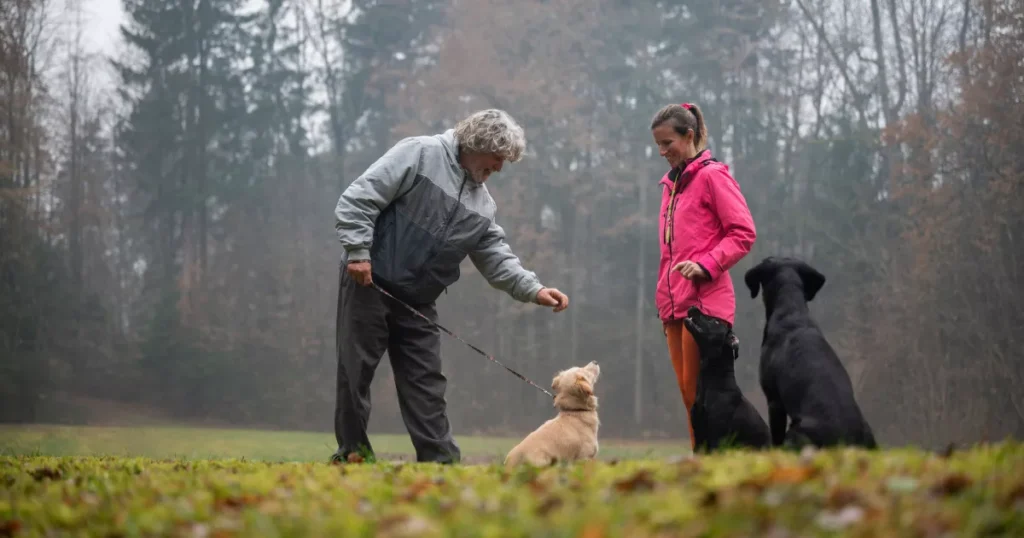
In addition to veterinarians, there’s an array of professionals specializing in canine fitness and nutrition. Dog trainers, canine physiotherapists, or even pet dietitians can offer invaluable insights. They can introduce exercises, dietary changes, or even behavior modifications that might be beneficial in your dog’s weight loss journey.
Such professionals bring a wealth of experience to the table. They’ve likely worked with numerous dogs, each with unique challenges and needs. Leveraging this expertise can introduce you to strategies you might not have considered. This collaborative approach, combining your dedication with their expertise, paves the way for a holistic weight management program tailored just for your dog.
7. Moderation in Treats and Avoiding Table Scraps

It’s tough to resist those pleading eyes when you’re enjoying a meal, but caving into your dog’s demands for table scraps can derail their weight loss. Human food often contains ingredients and spices that can be harmful to pets. Moreover, these scraps can significantly inflate their daily caloric intake.
When it comes to dog treats, moderation is crucial. While they’re a fantastic training aid and occasional indulgence, they should never constitute a significant part of your pet’s diet. Opt for low-calorie, nutritious treats, and always factor them into your dog’s daily caloric count. Remember, each treat, no matter how small, adds up.
8. Non-Food Rewards
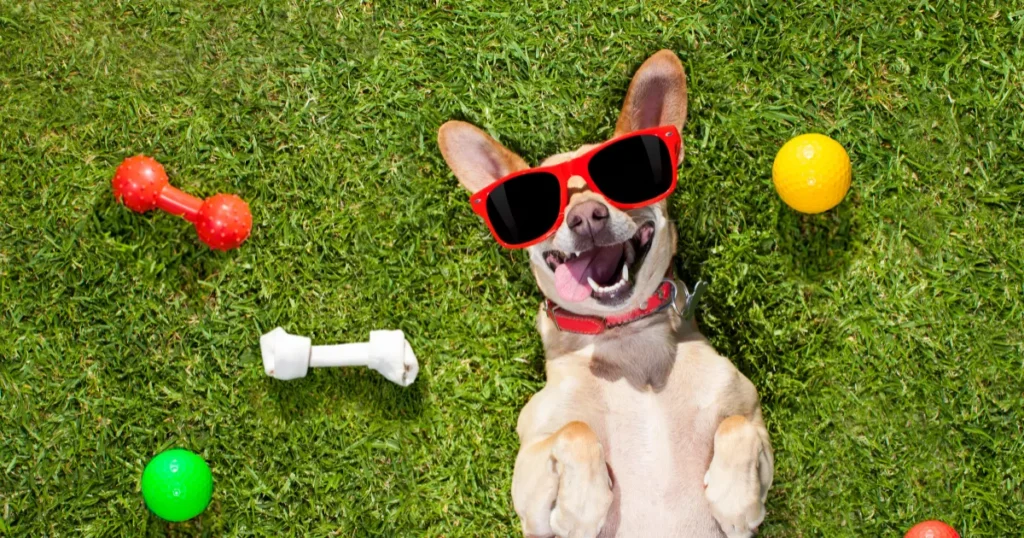
Food isn’t the only motivator for dogs. In fact, they often value our time, attention, and affection just as much, if not more. Instead of reaching for the treat jar every time your dog obeys a command, consider rewarding them with praise, a belly rub, or a few minutes of play.
This shift not only reduces their caloric intake but also strengthens the bond between you and your pet. Dogs thrive on positive reinforcement. A simple “Good job!” accompanied by a pat can be as rewarding as the most delicious treat. It’s about communicating love, approval, and joy.
9. Monitor Caloric Intake

Knowledge is power. By being aware of the exact number of calories your dog consumes each day, you’re better equipped to make informed decisions about their diet and exercise. This doesn’t mean you need to obsess over every single calorie, but having a ballpark figure can be incredibly helpful.
Consider keeping a simple food diary for your dog. Log their meals, treats, and any extra nibbles they might get throughout the day. There are also several pet-focused calorie tracking apps available that can simplify this process. Over time, this data provides insights into eating patterns, allowing you to make necessary adjustments to their diet or routine.
10. Incorporate Various Exercise Modalities

Diversity in exercise routines can keep things fresh and exciting for your dog. While walks are fantastic, there’s a world of other activities to explore. Swimming, for instance, is an excellent low-impact exercise for dogs, providing a full-body workout. Similarly, hiking offers both physical exercise and a sensory feast for your dog, as they navigate varied terrains and new scents.
When introducing a new activity, always ensure it aligns with your dog’s fitness level. What’s crucial is that the exercise should be something your dog enjoys. After all, it’s not just about the physical exertion but also the joy and mental stimulation it provides.
11. Prioritize Mental Stimulation

Mental fitness complements physical fitness. Dogs are intelligent creatures, and if their minds aren’t engaged, they can become bored, anxious, or even destructive. Puzzle toys are a fantastic way to challenge them mentally. They require problem-solving and can be an excellent distraction, especially when you’re not home.
Additionally, activities like scent games, where you hide treats and your dog has to find them, engage their natural instincts and provide both mental and physical stimulation. Training sessions, even if they’re just for a few minutes each day, keep your dog sharp and responsive. A mentally stimulated dog is often more relaxed and content.
12. Innovative Feeding Routines
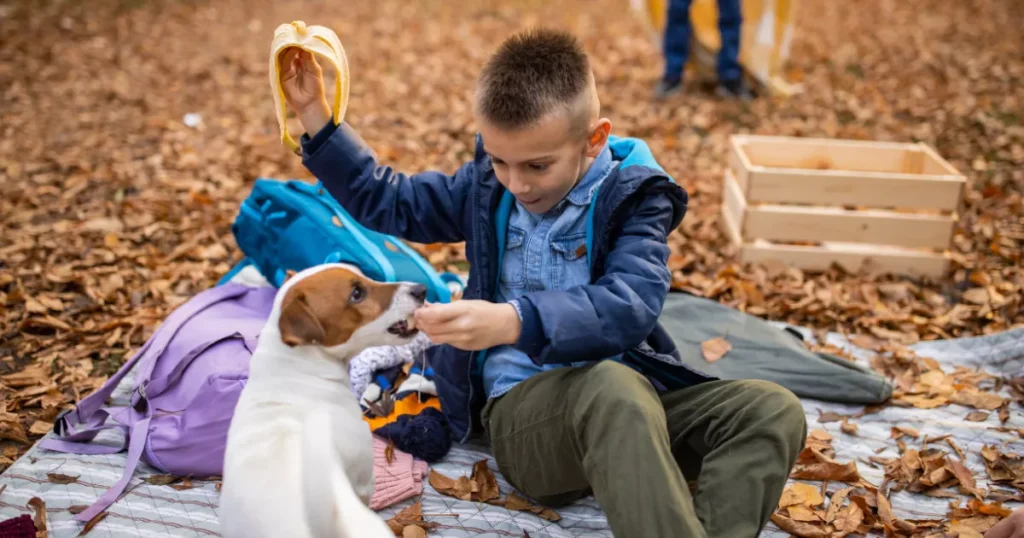
Feeding time doesn’t have to be a passive activity for your dog. By introducing toys like the Kong Wobbler or maze bowls, you transform mealtime into a fun challenge. These tools not only slow down their eating pace (which is excellent for digestion) but also mentally engage them.
Another innovative approach is to scatter their kibble in the backyard or around the house. This turns dinner time into a mini scavenger hunt, tapping into their natural foraging instincts. Not only does this make eating more exciting, but it also provides a little extra physical activity.
13. Provide Variety
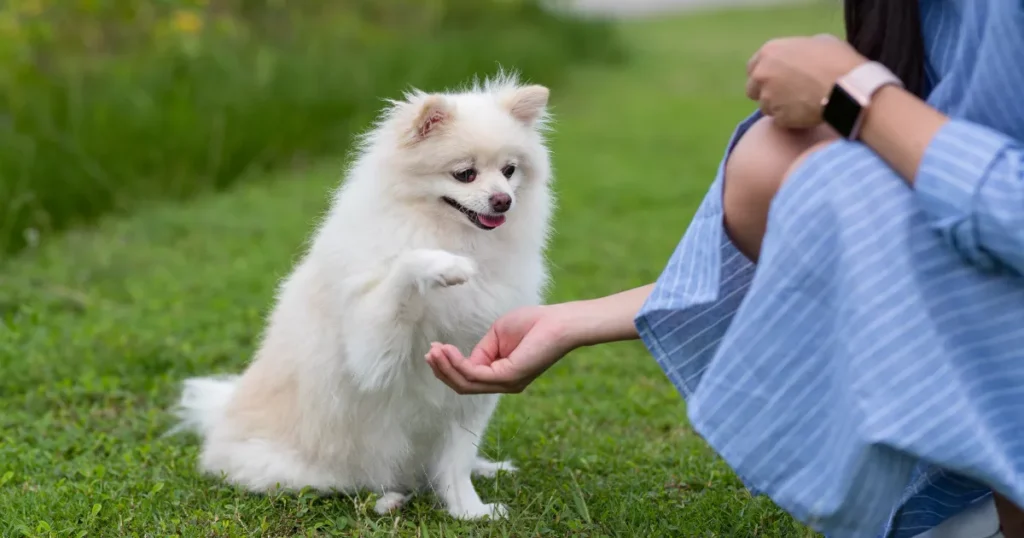
Just as we’d get bored doing the same thing day in and day out, so do our pets. Rotating toys, introducing new games, or even exploring a new walking route can add a dash of excitement to their day. These changes keep your dog engaged and eager for the day’s activities.
Moreover, this variety can be beneficial for their overall development. Different toys and games challenge them in varied ways, ensuring a well-rounded experience. It’s all about striking a balance: while routine provides comfort and structure, variety ensures life remains exciting and stimulating.
14. Use Positive Reinforcement
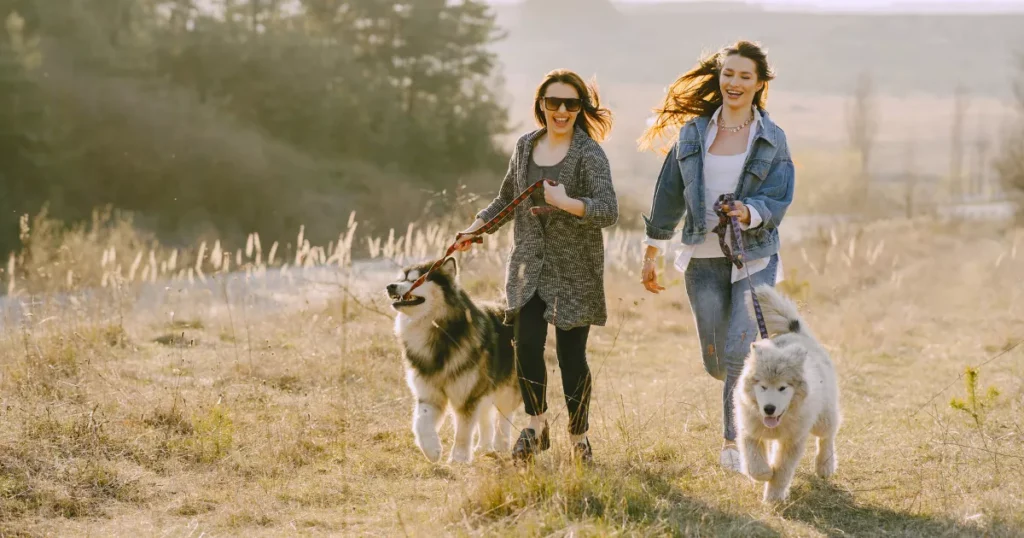
Positive reinforcement shapes behavior in a gentle, effective manner. Dogs are eager to please, and when they associate good behavior with rewards (be it treats, praise, or play), they’re more likely to repeat it. Always reward desired behaviors immediately, so the connection is clear.
Moreover, using positive reinforcement strengthens the bond between pet and owner. Your dog starts associating you with positive experiences, reinforcing trust and affection. Over time, you’ll find that you need fewer treats as your praise and affection become rewards in themselves.
In the end, achieving and maintaining a healthy weight for your dog is a journey that involves dedication, patience, and a lot of love. Each step you take, no matter how small, contributes to a happier, healthier life for your beloved pet. Celebrate the milestones, cherish the moments, and always prioritize their well-being above all.
Frequently Asked Questions
How can I ensure portion control for my dog's meals?
Measuring your dog's food using designated pet tools or a kitchen scale can ensure accurate portion sizes. Always check feeding guidelines and be aware of your pet's unique caloric needs.
What kind of regular exercise routines are suitable for overweight dogs?
Start with gentle activities like extended walks, and as their stamina builds, introduce more intense activities like fetch games, tug-of-war, or agility training, tailored to their breed and age.
Why is consistency crucial in managing my dog's weight?
Consistency in meal times, portion sizes, and exercise ensures predictable routines, allowing for better monitoring and progress tracking.
What professional services can assist with my dog's weight management?
Apart from veterinarians, dog trainers, canine physiotherapists, and pet dietitians can offer specialized advice and strategies for effective weight loss.
How do I manage my dog's craving for treats and table scraps during their weight loss journey?
Opt for low-calorie, nutritious treats, always factored into their daily calorie count, and resist the urge to give them human food which can be harmful and calorie-dense.
What are some tips for keeping dogs mentally stimulated?
Puzzle toys, scent games, and daily training sessions are excellent ways to engage your dog's mind.
How can you tell if your dog is bored?
Signs of a bored dog can include destructive behavior, restlessness, excessive barking, or even lethargy. Regular mental and physical stimulation can combat this.
What are some interactive toys for dogs that also aid in weight loss?
Toys like the Kong Wobbler or maze bowls not only mentally engage your dog but also make mealtime an active endeavor, helping in burning more calories.
How does positive reinforcement benefit my dog's weight management efforts?
Positive reinforcement, like treats, praise, or play, can motivate your dog to engage in activities and training essential for weight loss, while also strengthening your bond.
How do I introduce variety into my dog's daily activities?
Rotating toys, trying new games, or exploring new walking paths can bring fresh excitement into your dog's routine, ensuring they remain engaged and active.
Are there any apps or tools to help track my dog's calorie intake?
Yes, several pet-focused calorie tracking apps are available to help monitor your dog's food intake, ensuring a balanced diet during their weight management. Some popular options include "Petnet," "Pawtrack," and "PetSci Body Condition Score."